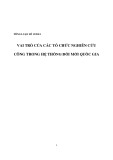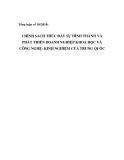
* Corresponding author
E-mail address: caturida_meiwanto_drm@mercubuana.ac.id (C. M. Doktoralina)
© 2020 by the authors; licensee Growing Science.
doi: 10.5267/j.uscm.2019.7.004
Uncertain Supply Chain Management 8 (2020) 197–206
Contents lists available at GrowingScience
Uncertain Supply Chain Management
homepage:
www.GrowingScience.com/uscm
Hashtags as a way to expedite the zakat supply chain
Caturida Meiwanto Doktoralinaa*, Zakaria Baharib, Shahir Akram Hassanb, Nor Asmat Ismailc
and Sri Ayu Lailatul Mardiyahd
aFaculty of Business and Economics, Universitas Mercu Buana, Jakarta, Indonesia
bCentre For Islamic Development Management Studies (ISDEV) Universiti Sains Malaysia, Pulau Pinang, Malaysia
cSchool of Social Sciences Universiti Sains Malaysia, Pulau Pinang, Malaysia
dFaculty of Computer Science,Program Studi Sistem Informasi Universitas Mercu Buana, Jakarta, Indonesia
C H R O N I C L E A B S T R A C T
Article history:
Received June 7, 2019
Received in revised format June
25, 2019
Accepted July 12 2019
Available online
July 14
201
9
Zakat is the most powerful Islamic instrument to support impoverished people around the
world. Zakat helps to reduce poverty by increasing the empowerment level of mustahiq
economics. However, ways in which the Zakat supply chain can be promoted need to be
investigated. The objective of this study, the first of its kind, is to examine the role of Zakat
hashtags in promoting the Zakat supply chain and mustahiq economics. Additionally, this study
examines the role of Zakat awareness and marketing politics. To achieve the objective of this
study, primary data were collected from various employees of Zakat collection institutions in
Indonesia. The data were analysed using partial least square structural equation modelling
(PLS-SEM). The study found that Zakat hashtags play a major role in increasing Zakat
awareness. It also plays an important role in increasing marketing politics. Zakat awareness
and marketing politics increase the Zakat supply chain, a mechanism that ultimately increases
the empowerment level of mustahiq economics.
.
, Canada
by the authors; licensee Growing Science
20
20
©
Keywords:
Zakat hashtags
Zakat supply chain
Mustahiq economics
Zakat awareness
Marketing politics
1. Introduction
Zakat is one of the most powerful Islamic instruments to support the global poor, providing assistance
to the financially weak and those who cannot afford their daily expenses. As an instrument of social
welfare (Ayuniyyah et al., 2019; Weiss, 2002), those of a certain level of wealth are expected to pay a
specific portion of their income (generally 2.5%) as Zakat (Ciftci, 2019).
Within the boundaries of Islam, poverty can be defined as the failure of an individual to achieve any of
the five basic human necessities of life as grounded in Maqasid Syariah: i) religion, ii) physical self,
iii) knowledge, iv) dignity and v) wealth (Nadzri et al., 2012). Therefore, Zakat is of great importance
for those who cannot fulfil their needs. Zakat is the way to reduce poverty (Ahmed et al., 2017; Shirazi,
2006; Yumna & Clarke, 2011).
Different factors affect Zakat (Aryandra et al., 2018; Sedjati et al., 2018). Data integrity in social media
and al-Quran online need information security (Almazrooie et al., 2018). ‘Hashtags’ (#) are an

198
important element of social media (Doktoralina & Bahari, 2018), and an important relationship has
developed between the two (Fox et al., 2015; Hawkins et al., 2014). Social media hashtags are used to
increase awareness among Muslims regarding the importance of Zakat in both economics and politics.
Enhancing the share of Zakat to grow the economy of the people has become an important issue.
Users of social media often demonstrate message solidarity with the help of ‘hashtags’, which include:
‘@zakatUS with #zakatmalaysia and #zakatindonesia and @zakatsg with #zakatbruneidarussalam.’
With the number of social media users increasing, it is likely that the #zakat hashtag could be a critical
element in promoting awareness of zakat payments among the Muslim people. Therefore, Zakat
hashtags are related to awareness (Wisataone, 2018). Moreover, ‘hashtags’ are also related to marketing
politics.
The ideas of politics and political understanding within the boundaries of Islam are meaningfully
dissimilar in the overall view. According to Islam, all actions should be performed in accordance with
the guidelines of sharia, as explained in the Al-Quran surah al-Isra (17:80). Politics are categorised into
two major types: the politics of ethics, which normally deal with the human purpose to stay alive, and
politics as a method to attain goals. Therefore, this study deals with the politics of ethics as it relates to
Zakat and its relationship with Zakat hashtags.
The Zakat supply chain has a significant role in the Zakat system (Doktoralina & Apollo, 2019; Larbani
et al., 2011). Zakat awareness and marketing politics support the Zakat supply chain. An increase in
awareness among the Muslim people increases Zakat payments, thus expediting the Zakat supply chain
(Doktoralina et al., 2018) (See Fig. 1). Those who have a good awareness of the Zakat system are more
involved in making Zakat payments compared with those who are less aware of the Zakat system and
its benefits. Moreover, an increase in the Zakat supply chain increases the strength of the mustahiq
economy. Mustahiq are those people who receive the Zakat. Not all people are mustahiq but certain
Muslim communities or peoples (in accordance with Islamic instructions) with a low income level are
considered mustahiq. The Zakat system leads to the empowerment of the mustahiq economy (Yuniar
et al., 2018), thus increasing the welfare of mustahiq people.
The objective of this study is to examine the role of Zakat hashtags to promote the Zakat supply chain
and mustahiq economics. Fig. 1 shows the relationship between the hashtags zakat, Zakat awareness,
marketing politics, Zakat supply chain and mustahiq economics. The sub-objectives of the study are:
1. To investigate the effects of Zakat hashtags on Zakat awareness and marketing politics,
2. To investigate the effects of Zakat awareness and marketing politics on the Zakat supply chain,
3. To investigate the effects of the Zakat supply chain on mustahiq economics.
Fig. 1. Theoretical framework of the study showing the relationship between Zakat hashtags, Zakat
awareness, marketing politics, Zakat supply chain and mustahiq economics.
Zakat Hashtags
Zakat
Awareness
Marketing
Politics
Zakat Supply
Chain
Mustahiq
Economics

C. M. Doktoralina et al. /Uncertain Supply Chain Management 8 (2020)
199
2. Hypotheses Development
Although various studies have been carried out on the Zakat system (Ahmad et al., 2014; Shinsuke,
2014; Sohag et al., 2015), this is one of the first studies to attempt to develop a framework to promote
the Zakat supply chain and mustahiq economics.
At first, the hashtag was used only to categorise certain topics for easier searches. More social and
creative users have followed, in which users apply hashtags to share textual data, pictures, videos and
news links, making a forum for data information marketing politics (Khan et al., 2018). This creates an
opportunity where the social reality is constructed with an exact meaning in order to help the objective
of the message maker (Setiawan & Santoso, 2017)—in this case, Zakat awareness. According to Islamic
instructions, mustahiq people include: Fakir (indigent), Miskin (needy), Amil (mosque official who
collects the tithe), Mualaf (recent convert to Islam), Riqb (slave), Gharimin (debtor/the indebted),
Fisabilillah (those who fight for God's blessing) and Ibnu Sabil (the traveller who aims for the good of
Allah SWT). This is illustrated in Fig. 2.
Fig. 2. Types of Mustahiq People for Zakat
According to Firdaus et al. (2012), one of the problems faced while collecting the Zakat is a lack of
awareness among those who need to pay it. Awareness is thus the most important element of Zakat (
Doktoralina, 2016), as it directly affects the Zakat supply chain. An increase in Zakat collections
increases the Zakat supply chain, which positively affects the mustahiq people, increasing the collective
impact on mustahiq economics.
Zakat hashtags also have an effect on marketing politics. Marketing politics in Zakat must be ethical
and follow Islamic instructions. Islam suggests that, as clarified in the Al-Quran surah al-Isra (17:80),
all activities must be conducted under the guidelines of sharia.
The trend has changed as local cultures adopt different modern lifestyles, business behaviours (Dwityas
& Briandana, 2017), economic politics and forms of governance. However, hashtags have altered the
process of da'wah performed by different Zakat institutions by increasing awareness among people
regarding their responsibility for paying Zakat. Hashtags should be planned to enter social media
without disregarding the original culture (Patra & Khan, 2016).
With the help of marketing politics, cultures should be designed to sustain Zakat payments, which will
lead to the development of mustahiq economics. Although the cultures of these countries (Doktoralina
et al., 2018) should be preserved, the growth of information technology is causing them to change
quickly (Sheldon et al., 2017; Yuliadi & Nugroho, 2019). The Zakat hashtag could frame and generate
a flexible, proactive chain to determine the value of awareness (Young-Ybarra & Wiersema, 1999).

200
Based on the above discussion, the following hypotheses are proposed:
H1: Zakat hashtags have a relationship with Zakat awareness.
H2: Zakat hashtags have a relationship with marketing politics.
H3: Zakat awareness has a relationship with the Zakat supply chain.
H4: Marketing politics has relationship with the Zakat supply chain.
H5: The Zakat supply chain has a relationship with mustahiq economics.
3. Research Methodology
3.1 Research Design
Choosing an appropriate design is the most important issue for any research study. This study employed
the quantitative method to test objective theories (e.g. theoretical framework of the present study) by
investigating the relationship between different variables (Creswell & Creswell, 2017). The
quantitative research method is also appropriate for testing hypotheses. As the data for this study were
collected from one time, this study is also based on a cross-sectional research design.
3.2 Sample Size
A sample is a group of participants or individuals selected from a larger group or population for survey
purposes (Salant et al., 1994). Selecting the appropriate sample size is imperative for reducing sampling
errors. While there are numerous methods used to analyse sample size, this study followed Comrey and
Lee's (2013) recommendations, according to which a “sample having less than 50 participants will
observed to be a weaker sample; sample of 100 size will be weak; 200 will be adequate; sample of 300
will be considered as good; 500 very good whereas 1000 will be excellent.” For this study we used a
sample size of 300.
3.3 Sampling Procedure
After selecting an appropriate sample size, the cluster sampling technique was used to distribute the
questionnaires. According to previous studies, this is an effective technique for covering a widely
dispersed population.
3.4 Data Collection Procedure
Ethics in research were addressed while collecting data. Respondents agreed to share data/information
in the survey if they decided to participate (Bell et al., 2018; Cooper & Schindler, 2013). None of the
respondents felt compelled to contribute to the survey (Sekaran, 2003).
Table 1
Response from respondents
Response
Frequency/Rate
Number of questionnaires distributed
300
Number of questionnaires returned
170
Number of useable questionnaires
163
Number of questionnaires excluded
7
Response rate
56.6%
Valid response rate
54.3%
This is to reflect the true objective while the procedure of answering the survey questions. Furthermore,
respondents who agreed to contribute were expected to be honest and truthful in their responses,
without any misrepresentation of information (Sekaran & Bougie, 2010). To distribute questionnaires,

C. M. Doktoralina et al. /Uncertain Supply Chain Management 8 (2020)
201
a list of respondents was obtained and respondents were selected randomly. Data collection is presented
in Table 1. Initial data screening is shown in Table 2. This shows that the data contains no missing
values and no outliers. However, normality is not an issue while using PLS (Reinartz et al., 2009).
Table 2
Initial Data Screening
No.
Missing
Mean
Median
Min
Max
SD
Kurtosis
Skewness
HZ1
1
0
4.967
6
1
7
1.908
-
0.701
-
0.663
HZ2
2
0
5.31
6
1
7
1.796
-
0.646
-
0.757
HZ3
3
0
5.185
6
1
7
1.894
-
0.328
-
0.889
HZ4
4
0
5.011
6
1
7
1.862
-
0.838
-
0.602
HZ5
5
0
5.022
6
1
7
1.942
-
0.74
-
0.677
HZ6
6
0
4.984
6
1
7
1.786
-
0.832
-
0.558
HZ7
7
0
4.707
5
1
7
1.973
-
1.101
-
0.369
HZ8
8
0
4.886
5
1
7
1.837
-
0.795
-
0.584
HZ9
9
0
4.793
5
1
7
1.883
-
0.977
-
0.353
ZA1
10
0
4.973
5
1
7
1.921
-
0.993
-
0.476
ZA2
11
0
4.777
5
1
7
1.919
-
1.042
-
0.363
ZA3
12
0
5.185
6
1
7
1.879
-
0.47
-
0.835
ZA4
13
0
5.185
6
1
7
1.876
-
0.72
-
0.719
ZA5
14
0
4.984
6
1
7
1.861
-
0.652
-
0.67
ZA6
15
0
4.902
6
1
7
1.857
-
0.82
-
0.57
ZA7
16
0
4.864
5
1
7
1.811
-
0.63
-
0.642
ZA8
17
0
3.832
3
1
7
1.939
-
1.149
0.344
MP1
18
0
5.234
6
1
7
1.765
-
0.116
-
0.839
MP2
19
0
5.196
6
1
7
1.81
-
0.631
-
0.683
MP3
20
0
5.201
6
1
7
1.861
-
0.374
-
0.817
MP4
21
0
5.163
6
1
7
1.819
-
0.727
-
0.681
MP5
22
0
5.207
6
1
7
1.821
-
0.276
-
0.838
MP6
23
0
5.245
6
1
7
1.818
-
0.304
-
0.85
MP7
24
0
5.022
6
1
7
1.917
-
0.687
-
0.708
MP8
25
0
3.88
4
1
7
1.893
-
1.06
0.261
ZSC1
26
0
4.962
5
1
7
1.918
-
0.802
-
0.505
ZSC2
27
0
5.147
6
1
7
1.872
-
0.701
-
0.676
ZSC3
28
0
4.88
5
1
7
1.796
-
0.951
-
0.375
ZSC4
29
0
3.967
4
1
7
1.841
-
1.146
0.148
ZSC5
30
0
5.103
6
1
7
1.731
-
0.377
-
0.662
ME1
31
0
5.027
5
1
7
1.774
-
0.902
-
0.448
ME2
32
0
5.092
6
1
7
1.841
-
0.666
-
0.654
ME3
33
0
5.071
6
1
7
1.833
-
0.593
-
0.623
ME4
34
0
5.239
6
1
7
1.787
-
0.594
-
0.693
ME5
35
0
4.918
6
1
7
1.981
-
0.984
-
0.584
ME6
36
0
4.87
6
1
7
2.025
-
0.792
-
0.679
ME7
37
0
3.87
4
1
7
1.979
-
1.227
0.344
ME8
38
0
5.049
6
1
7
1.968
-
0.681
-
0.729
4. Data Analysis
In recent decades, structural equation modelling (SEM) has emerged as the most useful and innovative
statistical analysis procedure that has been developed in the social sciences (Henseler et al., 2014).
These approaches are appropriate for a study that seeks to indirectly or directly estimate unobserved
latent variables (Chin & Todd, 1995). Fundamentally, SEM analytical methods employ numerous
techniques; this study used the procedure of Henseler et al. (2009). It is based on two major steps. The
first step is shown in Fig. 3.


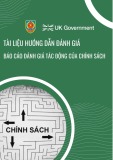
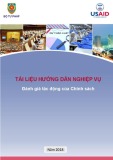
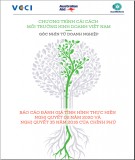
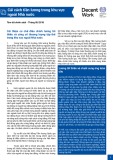
![Tổng luận Tư vấn khoa học cho hoạch định chính sách [chuẩn SEO]](https://cdn.tailieu.vn/images/document/thumbnail/2021/20210201/caygaocaolon10/135x160/6941612151242.jpg)
